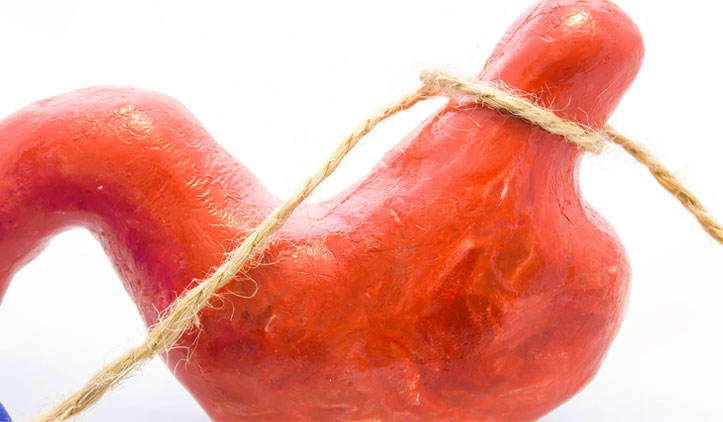Obesity Surgery

What Is Lap Band Surgery?
The LAP BAND System is an adjustable silicone elastomer band that is surgically placed around the stomach. The band is designed to limit food intake. When you eat less food your body draws on its own fat reserves to get the energy it needs. The result is you lose weight.
Who is a suitable candidate?
Not everyone who has a weight problem should consider surgery. It depends on whether or not you are overweight, obese, or morbidly obese. One way to tell is by your Body Mass Index (BMI). Your BMI depends on both your weight and your height.

If your BMI is 40 or more, you are said to have "morbid" obesity. A BMI higher than 40 suggests surgery might be a proper approach. For some people with a BMI between 35 and 40 ("severe" obesity), surgery might also be a good choice. These are people who have other conditions. For instance, if your BMI is 37 and you have severe sleep apnea, diabetes mellitus, or heart problems, your doctor might suggest surgery to help you lose weight.
How it works?
By creating a smaller gastric pouch, the LAP-BAND System limits the amount of food that the stomach will hold at any time. The inflatable ring controls the flow of food from this smaller pouch to the rest of the digestive tract. The patient will feel comfortably full with a small amount of food. And because of the slow emptying, the patient will continue to feel full for several hours reducing the urge to eat between meals.
Procedure
Cancer of the pancreas is curable only when it is found in its earliest stages, before it has spread. Otherwise, it is very difficult to cure. However, it can be treated, symptoms can be relieved, and the quality of the patient's life can be improved. Pancreatic cancer is treated with surgery, radiation therapy, or chemotherapy.
Surgery
Surgery may be done to remove all or part of the pancreas. Sometimes it is also necessary to remove a portion of the stomach, the duodenum, and other nearby tissues
Radiation
Radiation therapy (also called radiotherapy) uses high-powered rays to damage cancer cells and stop them from growing. Radiation is also used as a way to kill cancer cells that remain in the area after surgery.
Chemotherapy
Chemotherapy uses drugs to kill cancer cells. The doctor may use just one drug or a combination. Chemotherapy may be given by mouth or by injection into a muscle or vein. The drugs enter the bloodstream and travel through the body.
Advantages of this Procedure
The process is less invasive:
Of the surgeries used to treat obesity, the one used to place the LAP BAND System causes the least trauma. There is no need for cutting or stapling the stomach. Also, the LAP BAND System can usually be placed laparoscopically. With this surgery, it's possible to avoid large incisions and scars.
The band is adjustable:
With the LAP-BAND System, the amount of food you can eat at one time can often be changed without more surgery. This can be done simply by inflating or deflating the band.
Changes can be reversed:
If it needs to be, the LAP-BAND System can be removed. When it is, the stomach generally returns to its original form. In general, it's easier to remove the LAP-BAND System than it is to reverse other procedures.
You need less hospital time:
Patients normally leave the hospital one to three days after laparoscopic surgery
You may recover more quickly:
After the procedure, patients usually get back to their normal activities in a week or two. It may take four weeks or more if the procedure is not done laparoscopically or if there are complications.
Request For An Appointment
Tay Khoon Hean Surgery is located in the Gleneagles Medical Centre. The clinic and its friendly, caring and dedicated staff offer a comprehensive service in all aspects of General Surgery. The clinic provides a comfortable and warm waiting area with a fully equipped treatment facility for minor surgical procedures.

Clinic Address
Gleneagles Medical Centre6 Napier Road, #08-02Singapore 258499
Contact Information
Tel : +65 6471 1221
Email : tkhsurgery@yahoo.com.sg
24hr Emergency Hotline : +65 6535 8833
Consultation Hours
Mon - Fri : 8:30am - 5:00pm
Sat : 8:30am - 1:00pm
Sun & PH : Closed

